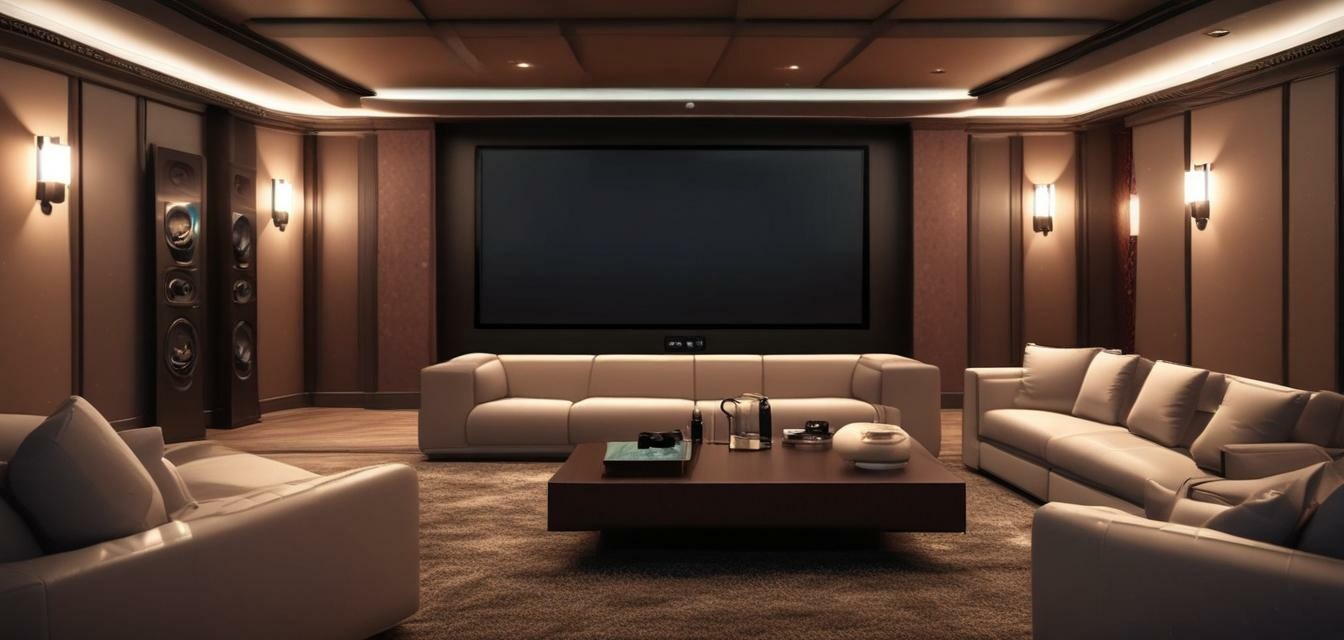
Essentials for Installing a High-End Sound System
Key Takeaways
- Choosing the right components is critical for an immersive experience.
- Proper room placement and calibration enhance audio quality significantly.
- Investing in cabling and connectivity solutions ensures reliability and performance.
- Acoustic treatments can greatly improve sound clarity and richness.
- Regular maintenance is essential for optimal performance of your sound system.
Setting up a high-end sound system can seem daunting, but with the right guidance, it can be an exciting journey towards enhancing your home theater experience. This guide will walk you through the critical essentials needed for installing a high-quality sound system in your home.
1. Choose Your Components Wisely
The foundation of a great sound system lies in the components you select. Here are the key parts you will need:
- Soundbar or speakers
- AV receiver or amplifier
- Subwoofer
- Media source (like a Blu-ray player or streaming device)
- Acoustic treatments
Recommended Product
5.1 CH Surround Sound Bar with Dolby Audio
Experience immersive audio with this 5.1 surround sound system, featuring Dolby Digital Plus and a wireless subwoofer for deep bass.
Learn More2. Planning Your Setup
Before installation, sketch out a plan for your home theater setup. Here are some considerations:
- Room dimensions and layout
- Viewing distance from the screen
- Speaker placement for optimal sound distribution
- Placement of furniture to enhance listening experience
Speaker Placement Tips
| Speaker Type | Recommended Placement |
|---|---|
| Front Speakers | Place at ear level, about 30 degrees from the center. |
| Surround Speakers | Position them slightly behind the seating area, at ear level. |
| Subwoofer | Experiment with placement, often best in a corner or near a wall. |
3. Ensuring Proper Connections
Using high-quality cables and connectivity solutions is essential for reliable audio performance. You should consider:
- HDMI cables for high-definition sound
- Optical audio cables for digital sound signals
- Speaker cables that match the specifications of your speakers
- Audio interconnects for connecting various components
Explore our collection of Cables & Connectivity Solutions to find the best options for your setup.
4. Acoustic Treatments
To enhance your sound quality, consider investing in acoustic treatments. These adjustments can significantly improve the acoustics of your room:
- Sound-absorbing panels
- Bass traps in corners
- Diffusers to minimize echo
- Soft furnishings to absorb sound
For more information on how to improve your acoustics, check our guide on Acoustic Treatments & Accessories.
5. Fine-tuning Your System
After installation, it's crucial to calibrate your system. This involves:
- Adjusting speaker levels to match your room dynamics.
- Running audio calibration software, if available.
- Tweaking settings for optimal sound based on content type.
Calibration Tips
Use calibration tools that often come with your AV receiver, or consider professional tuning services for the best results. Additionally, refer to our guide on Advanced Audio Calibration for expert advice.
6. Regular Maintenance
To keep your system performing at its best, regular maintenance is key. Here’s how:
- Dust speakers and components periodically.
- Check all connections monthly to ensure they are secure.
- Keep firmware updated for your AV receiver.
Pros
- Immersive sound experience that enhances viewing.
- Customizable setups to fit any room configuration.
- Advanced features for audio tuning and adjustment.
Cons
- Can be expensive to set up.
- Requires space for equipment and acoustic treatments.
- Can be technically challenging for beginners.
Conclusion
Setting up a high-end sound system involves careful planning and attention to detail. By following these essential steps and investing in quality components, you can create a breathtaking auditory experience in your home. Remember, the ultimate goal is to tailor the setup to suit your unique space and preferences.


